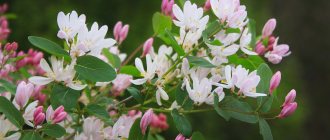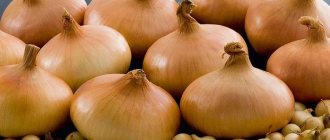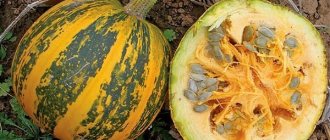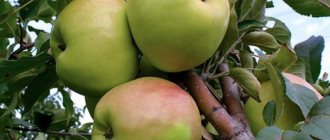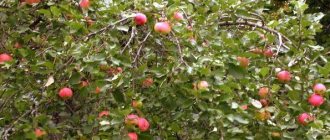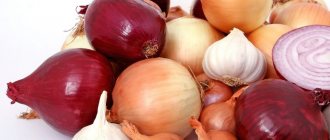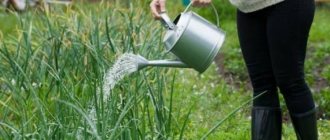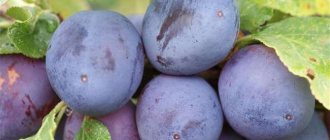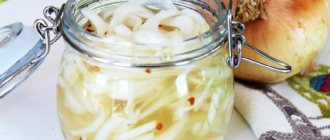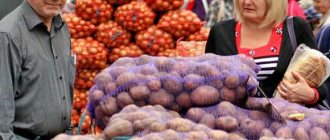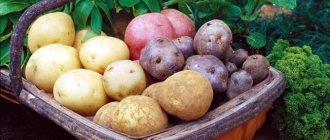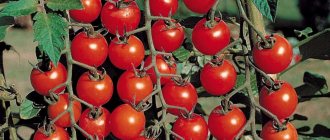Onions have long been used in the preparation of many different dishes. That is why almost every housewife, when choosing a crop to grow, prefers to plant several varieties at once. Different types of onions growing in the garden make it possible to prepare different masterpieces, as well as improve your gardening skills.
There are many varieties of onions, among which salad varieties occupy a special place.
Sweet onions are called salad onions. It can be either white or red, or classic brownish. Salad onions (photo below) are almost not bitter at all. This is why it got its name, as it is often used to prepare fresh salads.
Salad varieties of onions
In terms of taste, such onions can be sweet or semi-sharp. Sweet varieties include: Exibishen, Yaltinsky, Ermak.
For the semi-sharp ones: Black Prince, Alvinu, Albion, Red Baron, Carmen, Zolotnichok, Esaul, Classic, Master, Odintsovets, Retro, Champion.
In color, lettuce onions can be white (Exhibition, Albion), red (Yalta, Black Prince, Alvina, Carmen, Retro, Red Baron), classic brown (Ermak, Zolotnichok, Esaul, Odintsovets, Champion, Master, Classic) and green ( Legionnaire, Baia Verde, Green Banner, Emerald Isle).
Late ripening varieties and hybrids
Stardust F1
Attractive snow-white onions attract the eye from afar on market stalls. A medium-sized round head weighs 40–50 g, the flesh is dense and has a pungent taste. Harvesting begins 130 days after planting.
Productivity is good - up to 30 kg per 10 sq. m. The plantings are unpretentious, the plants are resistant to cold and fungal diseases, the hybrid is perfectly stored and transported, and is successfully harvested by mechanization.
Farmer late
Late onion variety Farmer
Excellent for mass plantings, long-term storage and transportation, it works well for sowing seeds in the ground. It takes 130–140 days from germination to harvest. The shape of the bulb is round, the average weight is 250 g, when planted as seedlings it reaches 350 g. The integumentary scales are golden brown, the flesh is white, crispy, with a sharp, rich taste.
The late farmer is valued for the large size of its spectacular onion heads, versatility of consumption, excellent preservation and resistance to fungal infections.
Slava Ozharova
A domestic reliable variety is recommended for the Central Black Earth region, preferably cultivated through early spring sowing of seeds. The shape is round, the color of the upper scales is golden, the taste is pleasant, semi-sharp. The weight of the leveled onions is small, about 70 g.
The harvest matures on the site up to 50–80% and needs ripening. The yield is stable, even, 10–13 kg per 10 sq. m. Advantages - resistance to adverse conditions, shelf life and transportability.
Description of sweet varieties
Exhibition white salad onions are very sweet and juicy. Its ripening period is 130 days. Its turnip is round and very large - it can reach 500 g, but there have been cases when it weighed 700-800 g. The only disadvantage of this variety is its short shelf life (up to 3 months).
The Yalta variety is a sweet salad onion that belongs to the red variety. It is highly valued for its taste. The turnip ripens in 140-150 days. The shape of the bulb is flattened at the top and bottom, and the color has purple tones. Its weight reaches 200 g. The shelf life, like that of Exhibition, is short - only four months.
Ermak is a record holder for the speed of maturation. Its harvest can be harvested within 75-95 days after sowing. It has a soft and juicy texture. The turnips are medium in size and can be stored until next season. Another advantage in favor of this variety is its good immunity to environmental influences.
Popular varieties of red, yellow and white onions
We bring to your attention well-proven varieties of onions, which are preferred by the vast majority of gardeners.
Kaba
Late-ripening variety with dense, round-flat and rounded bulbs with a downward slope. The pulp is white, sometimes with a greenish tint. The outer scales are yellow or light brown. The variety is not resistant to downy mildew (downy mildew) and is also damaged by the onion fly.
| Use | Taste | Growing method | Bulb weight (g) | Keeping quality | |
| semi-sharp | 70-145 | unsatisfactory | |||
Red Baron
Early ripening variety. The bulbs are round, flattened at the top and bottom, red or dark purple in color outside and inside. To obtain larger bulbs, it is recommended to grow this variety through seedlings.
| Use | Taste | Growing method | Bulb weight (g) | Keeping quality | |
| semi-sharp | 130-150 | excellent | |||
Snowball
Mid-early variety of white onion. It has almost round and white (both outside and inside) bulbs. Quite resistant to bolting, but moderately susceptible to downy mildew and neck rot.
| Use | Taste | Growing method | Bulb weight (g) | Keeping quality | |
| semi-sharp | 120-200 | average | |||
Strigunovsky local
Early ripening variety. It has round, dense bulbs with light flesh and pink or brown outer scales. It can grow without problems in both hot and cool climates.
| Use | Taste | Growing method | Bulb weight (g) | Keeping quality | |
| very spicy | 45-80 | excellent | |||
Sturon
Mid-season variety. The bulbs are round, white, tightly covered with a yellow-brown skin. Resistant to diseases and bolting.
| Use | Taste | Growing method | Bulb weight (g) | Keeping quality | |
| spicy | 70-180 | excellent | |||
Texas yellow
Early ripening variety. The bulbs are round, quite large, straw-yellow in color with dense white flesh. Resistant to pink root rot.
| Use | Taste | Growing method | Bulb weight (g) | Keeping quality | |
| semi-sharp | 80-150 | average | |||
Description of semi-sharp varieties
The Black Prince variety has dark purple outer scales. A ripe turnip is dense and weighs about 100 g. It belongs to the mid-season varieties, since the ripening period is 100 days. It has high productivity. It has a universal purpose - it can be used for salads, main dishes, and canning.
Another wonderful mid-season variety of semi-sharp onions is Alvina. The turnip grows flat with purple outer scales. Full ripening takes 100-105 days. Its weight does not exceed 100 g, but the variety is characterized by stable yield.
A hybrid like Albion also has all the qualities of salad onions. It is white, sometimes even turning transparent. From the moment of germination to ripeness, it takes from 90 to 120 days. This 100 g onion is dry on the outside, but has juicy scales inside.
Red Baron is a semi-sharp red salad onion that is not picky about external conditions. It gives a good harvest even in dry summers. Red-violet flattened turnips weigh 50-120 g. The bulb is dense and juicy. Used in salads and processing.
Reviews from gardeners
Platon, 37 years old, Kaluga
As for me, sweet varieties are not for everybody, they are better suited for southern latitudes. In the middle zone it is quite difficult to deal with them, since to get a good harvest you need to grow them through seedlings. I liked the taste most of all the white bulbs of the f1 Muzyka hybrid. Of course, they don’t last long, but we eat them first, even before winter.
Irina, 52 years old, Nizhny Novgorod region
Last season I decided to try growing Dutch Exhibition. I sown the seeds for seedlings at the end of March and planted them in open ground in May. At that time, the seedlings were 12-15 cm high. I watered them periodically, loosened the soil, and fed them with organic matter in June. By autumn, full-fledged, rather large, beautiful teardrop-shaped bulbs grew up to 150-200 grams. Their taste is really excellent, sweetish, without bitterness at all. The pulp is soft and juicy. The harvest turned out to be decent, but was quickly consumed in salads and other dishes. It’s very good in cooking – it doesn’t cause any tears when cutting, you can just eat it raw with potatoes and herring!
Dilia, 44 years old, Astrakhan
We have been planting a proven variety of sweet onions, Spanish 313, for a long time. We collect our own seeds and sow them directly into open ground in the spring. I really like both the taste and the appearance of the heads - round, weighing 100-130 g, golden yellow with a pink tint. The leaves fall within 110-130 days from the moment of full emergence. Productivity is stable from 2.5 to 4.5 kg per square meter. m. One drawback is low resistance to disease. It often picks up downy mildew, especially after prolonged rains or watering on the leaves, when the crops are thickened and the weeds are not weeded out in time.
Green varieties
Green salad onions are most often called unripe onions, but they also have their own varieties.
It was cultivated several thousand years BC and is actively used to this day. It grows, like ordinary onions, on the territory of all continents inhabited by people.
It is often grown from onions, but spring onions or shallots can also be used. Considering its taste, it is better to collect it during the period when the turnip is not yet fully ripe.
There are the following varieties of green salad onions:
- Legionary. A powerful, long-finned plant of green color, on the surface of which a faint waxy coating is noticeable. When it ripens, a bulb does not form.
- Baia Verde. This hybrid of onions and spring onions has very large feathers. This selection move made it possible to significantly increase productivity compared to other varieties of green onions.
- Green banner. The earliest variety, the harvest from which can be cut 40 days after emergence. It has a soft, slightly spicy taste.
- Emerald Island. A very storage-resistant variety - can be stored for a long time without special conditions. It grows well regardless of when it was sown.
Selection of varieties
Of the 385 varieties and hybrids of onions officially registered in the State Register of Russia as of 2021, only 20 are sweet, and out of 63 shallots, only 1. For ease of selection, we present a list of them in the table:
| Recommended growing regions | Name | Ripening period | Year of registration/originator |
| Everywhere in the Russian Federation | "Viking F1" | early | 2017 / Research Institute of Vegetable Crops Breeding, breeding (Moscow) |
| "Zodiac F1" | late | ||
| "Red Sweet F1" | early | 2020 / Sakata vegetables Europe SAS (France) | |
| "Singy 2 XO" | late | 2020 / Seedon Co., LTD (Korea) | |
| "Status" | early | 2018 / Andreichenko V. E. (Krasnodar) | |
| "Exhibition" | mid-late | 2000 / Bejo Zaden BV (Netherlands) | |
| "Yalta Plus" | average | 2019 / Research Institute of Agriculture of Crimea (Simferopol) | |
| "Istobensky" (shallot) | average | 2019 / NPF "Agrosemtoms" (Kirov) | |
| Central (Middle zone, Moscow region) | "Bylina" | average | 2013 / Selective (Moscow) |
| "Victoria Skiernievitska" | average | 2006 / Agro-best LLC (Smolensk) | |
| "Nevix" | early | 2010 / ISI Sementi SPA (Italy) | |
| "Retro" | late | 2008 / Agro (Moscow region) | |
| "Mermaid" | average | 2009 / (Moscow) | |
| "Sima" | average | 2016 / Agro (Moscow region) | |
| "Ecstasy" | mid-early | 2011 / Research Institute of Vegetable Crops Breeding, Selection (Moscow) | |
| Siberia, Ural, Far East | "Candy F1" | mid-early | 2006 / Monsanto Holland BV (Netherlands) |
| North Caucasus | "Spanish 313" | late | 1943 / Federal Scientific Center for Vegetable Growing (village VNIISSOK, Moscow region) |
| "Capricorn F1" | early | 2016 / Sakata vegetables Europe SAS (France) | |
| "Rambo" | early | 2011 / Maraldi Sementi SAS (Italy) | |
| "Sierra Blanca F1" | early | 2011 / Monsanto Holland BV (Netherlands) | |
| "Yalta white" | early | 2017 / Selective (Moscow) |
Some semi-sharp varieties are also classified as “salad” varieties, for example, “Red Baron”, “Stardust” and others. There is an opinion that sweet onions should be red-burgundy, violet-blue or white, but many of the listed varieties have outer scales of the usual golden-yellow-brown color. The shape of the turnip also varies significantly: from round-flat to broadly ovoid.
The average weight of the bulb is 100-150 g; individual specimens can gain weight over 0.5 kg
Taste characteristics and biochemical composition directly depend on soil and climatic conditions, weather factors, and the intensity of agricultural technology. It is no secret that the famous “Yalta” onion, grown in different parts of Crimea: on the South Coast (in the dry subtropics of the Mediterranean type) and in the steppe zone (temperate continental climate) differs in taste, and when cultivated in other regions it generally changes its properties and acquires a pronounced severity of medium or high degree.
New items: brief descriptions
We invite you to get acquainted with new representatives of sweet onions, which are included in the State Register of the Russian Federation in 2021 and are recommended for cultivation on private farms throughout the country:
- “Red Sweet F1” is an early-ripening, two-germ hybrid, well suited for producing turnips from seeds in one season and for winter crops in the southern regions. The bulb is medium in size, weighing 135 g, transversely elliptical in shape with a thin neck. Dry scales (4 pcs.) are red, juicy scales are purple. Marketable yield is about 6 kg/m2;
- “Singi 2 XO” is a winter-hardy hybrid, drupic, recommended for cultivation as a winter crop and for growing turnips in an annual crop from seeds. The bulb is large, weighing 100 g, broadly ovoid with a thick neck. Dry scales (2 pcs.) are brown, juicy - white with a dark golden hue, semi-sweet taste. The average yield is 1.8-2.2 kg/m2.
Growing sweet onions
It is impossible to grow salad onions from sets, since such varieties do not exist. The reason is that almost all varieties of sweet and semi-sharp onions can be stored for up to 4 months. Growing real salad onions is only possible from seeds. In practice, dividing onions according to taste (hot, semi-sharp, sweet) is arbitrary, since the taste of turnips can change. It depends on the place where the onion grows.
Salad onions have medium density and contain a large amount of water, which gives the inner scales juiciness. These varieties are most often grown in the south. Onion varieties are very demanding regarding sunlight. Southern varieties require 13-14 hours of daylight for normal growth.
Growing onions from seeds is preferable than from sets, since there is no need to deal with various diseases and pests. The reason for this is widespread downy mildew, white rot, viruses and pathogenic nematodes that threaten the seedlings.
However, planting seedlings also has its advantages: a high level of germination, a powerful assimilation apparatus is formed earlier (as a result - larger bulbs), and resistance to weeds growing nearby is developed. It is these advantages that attract people when choosing a planting method.
If onions are sown on a small area, and not on a hundred hectares of field, growing seedlings becomes more profitable.
Hot, semi-sharp, sweet onions - looking for differences
All hot onion varieties are early ripening. They have good shelf life, a high content of essential oils and sugars, but at the same time they are less productive. Such varieties, as a rule, are covered with several layers of outer scales, and therefore they can be removed not only manually, but also with the help of specialized equipment.
Semi-sharp onion varieties have few external scales, and the flesh is not so dense and sharp. When harvested with special equipment, such onions are often injured and quickly become unusable. Peninsular varieties are considered medium-ripening and require more time to ripen. However, they produce a higher yield than spicy varieties.
Sweet onions have a wonderful taste and are often used fresh. They produce a high yield, but it is stored for a short time. Hot and semi-sharp varieties of onions can be grown in any region. In the southern regions, during the growing season the harvest can even be obtained from seeds. And in the middle zone and northern zones - only through seedlings or by planting sets. Sweet varieties are grown mostly from seeds in hot southern regions.
Growing seedlings
You can grow seedlings both in a greenhouse and on a windowsill. The best age for planting seedlings is 50-60 days.
Seeds are sown in early spring (mid-March). The seedling container should have a hole in the bottom. Before soiling, a little expanded clay should be poured into it to create drainage. You need to fill it with the composition to a depth of 15 cm, after preheating it and disinfecting it. You can also use ordinary peat soil for sowing seeds, but it should not contain “living soil”.
It is necessary to place the seeds on the prepared soil and cover them with a layer of soil 0.5 cm thick. After this, the container is covered with film and placed on the windowsill. The soil should be moistened and fertilized as necessary.
The optimal temperature for seeds will be 20-25 °C. After the first shoots appear, the film is removed and the temperature should be reduced to 16-20 °C. High temperatures cause the sprouts to stretch and weaken.
A month after the first shoots, secondary roots appear on the sprouts. At this time, the soil must be saturated with moisture and a weak soil solution. This promotes normal growth and development of seedlings. Feeding should be done once a week.
When the sprouts are strong and ready for planting, in warm weather they can be left outside and hardened for 2-3 days.
Features of cultivation
Growing sweet onions is no more difficult than regular onions. However, there are a number of features that will allow you to achieve a good harvest and pleasant taste:
- It is better to plant in sunny areas. In the shade, the onion most often begins to produce more greenery, but the bulb does not develop.
- Before planting, fertilizers are applied to the soil, and several more fertilizing treatments are carried out during the season to provide the vegetable with all the necessary elements.
- It is best to soak seeds and sets in potassium permanganate before planting, and plant them after they have dried.
Transplanting
Planting seedlings is quite simple. Often the soil in the container is well watered and the seedlings are taken out (dug up). You need to act carefully so as not to damage the roots of the seedlings. It is necessary to take into account that the root hairs covering the onion roots dry out quickly, so the planting process should not be delayed.
Seedlings can be planted when the soil warms to 10 °C. It needs to be planted at the same depth at which it grew before, but before that all the roots should be straightened. The row spacing should be at least 15 cm. After planting the seedlings, it is necessary to water and repeat every other week.
Further care is no different from caring for plants sown directly into the soil. They are mulched with humus or peat. The fertilizer layer should not exceed 2-3 cm. When caring for onions, you should remember that its root system is very poorly developed, so an excessive amount of fertilizer can lead to the death of the plant.
Seedlings from seeds do not differ in the feeding regime from plants grown from seedlings. Sweet varieties need more potassium, but you shouldn’t go overboard with nitrogen.
Specifics of agricultural technology
In stores selling planting material, it is quite difficult to find onion sets of sweet varieties. It’s easier to purchase “chernushka” seeds, from which you can grow a turnip crop in one season, although in the central zone, northern regions and areas of risky farming, experts advise sowing them for seedlings, and not immediately in open ground.
Original seeds of varieties of Russian selection in packaging from manufacturing companies
The seedling method, although more labor-intensive, has its advantages:
- planting material is much cheaper;
- plants practically do not shoot in the first year of growing season;
- the bulbs are formed 1.5-2 times larger than when using seedless methods, the yield is higher.
When purchasing, it is important to pay attention to the release and expiration dates of the seeds. Their viability does not last long, it sharply decreases in the 2nd year and almost completely disappears already in the 3rd.
To improve germination, seeds, if they are not covered with a protective shell, are advised to first soak them for several hours (overnight) in water with the addition of a growth stimulant (sodium humate). Before sowing in open ground, it is advisable to pickle them for 20-30 minutes in a disinfectant 1% solution of potassium permanganate or boric acid, and then rinse with clean water. Untreated seeds in cold soil against the backdrop of spring temperature changes are more often susceptible to damage by pathogens of common diseases and rotting.
Sowing of seedlings is usually carried out in early March so that at the age of 50-60 days they are ready for planting in the beds. Seeds are sown in the soil in April - May, when the top layer warms up to +8...10 ℃. The first entries may appear after a month, so it is important to clear the area allocated for onions in advance of weed roots.
Delicate onion sprouts are easily damaged and even destroyed when weeding actively growing weeds
To speed up seed germination, experienced vegetable growers advise making beds in high, well-lit places and covering them with a transparent film 2-3 weeks before the planned sowing for better heating. The soil is preferably loamy or sandy loam, enriched with rotted manure or compost. The seeds are planted in the soil to a depth of 1-1.5 cm, up to 4-5 g are consumed per 1 square meter. For convenience, small nigella seeds can be glued at a distance of 3-5 cm onto paper tapes using starch paste. More frequent placement is justified if the quality of the seed material is in question. After the emergence of seedlings, the thickened crops are thinned out, leaving intervals between plants of 6-10 cm.
Watering and fertilizing
Sweet representatives of the crop are more demanding on soil fertility and moisture than spicy ones. They require regular watering, especially during the initial stages of growth in May - June, during dry periods. After watering and rain, the soil must be loosened to prevent the formation of a surface crust.
In commercial cultivation, large farms often use drip irrigation systems.
The greenery of plants planted for the purpose of producing large turnips is not cut off.
A supply of nutrients in the soil is created in advance: if sowing seeds, planting seedlings or sowing is planned for the spring, then in the fall, and for pre-winter planting - in the summer. The earth is dug up and 5-10 kg of mature organic matter is added to each square meter, as well as 20-40 g of superphosphate, 5 g of potassium sulfate or 100 g of wood ash. If necessary, adjust the acidity of the soil, since onion crops react poorly to high levels of acids. During the season, 3-5 fertilizing is carried out, alternating mineral complexes and organic fertilizers in the form of a solution of chicken manure, slurry or nettle infusion.
Growing greens
Green salad onions are grown in the same way as turnip onions. All stages are repeated, but it is planted more densely. The method of growing green onions from seeds is very labor-intensive, so it is used less frequently. Often, green feathers are trimmed from young onions.
The period from seed germination to the first cutting of greenery is 70-80 days, followed by cutting of new feathers after 40-50 days. The amount of time before subsequent cuttings depends on lighting, soil moisture, fertilizing and air temperature.
The height of fully ripe green onions depends on the variety, but on average it ranges from 50 to 70 cm. You can cut the greens earlier, but in this case the young feathers will not contain as many useful substances as the mature ones.
To ensure a continuous harvest, seeds are sown every 2 weeks.
Mid-season varieties
Aleko
These bright, tasty onions are produced equally well both by sowing seeds and by planting sets; in the latter case, the harvest is obtained in 100–110 days. The onion is round in shape, weighs up to 60 g. The flesh has a sharp, rich taste, dense, white with a purple tint. The upper scales are purple with a purple tint.
Productivity is stable, above average - up to 19.6 kg per 10 square meters. m. Ripens well on the site - up to 94%, requires short ripening, after which it is stored perfectly.
Odintsovets
The round golden bulbs are well preserved, transportable and suitable for mechanized harvesting. Medium size - 60–80 g, white-cream flesh, with a pleasant harmonious taste and slight pungency. The integumentary scales are dense, golden-bronze.
The crop is harvested 110–120 days after emergence, receiving an average of about 15 kg per 10 sq. m. A significant drawback is susceptibility to downy mildew and neck rot, so plants during the growing season need regular treatments with fungicides.
Setton
A universal onion with high taste and excellent preservation, ripens 110 days after planting. On average, it weighs about 120 g, under optimal conditions it can be larger, up to 150–190 g. The shape is round-oval, slightly elongated at the neck. The color of the integumentary scales is yellow, in the area near the neck it is brownish. The pulp is creamy, spicy-sweet, spicy.
The yield is high; with good agricultural technology you can get up to 50 kg per 10 square meters. m. Resistance to fungal diseases and bolting is above average.
Krasnodarsky G 35
An old reliable variety of domestic selection. The harvest is harvested 110–120 days after sowing. The bulb is medium-sized, one-dimensional, weighing about 100 g. The integumentary scales are yellowish-brown with a slight pinkish tint. The pulp is white, semi-sharp taste.
Stable harvest, you can harvest up to 20–40 kg from 10 sq. m. Maturation largely depends on weather conditions and ranges from 50–95%, keeping quality is mediocre. In damp, cool weather it is affected by fungal diseases - downy mildew and neck rot.
Using lettuce onions in cooking
Different types of onions are suitable for preparing different dishes. It depends on the taste of a particular variety.
Brown salad onions are especially popular among housewives because they are the most common. It is used to prepare dishes from fish, vegetables (including salads) and meat. In addition, it is suitable for decorating salted fish and mushrooms.
White varieties of salad onions are much softer and sweeter than classic brown (yellow) ones. It is stuffed, grilled, stewed, added to salads, sauces and marinades.
Red salad onions are the most aromatic, so they are often used in salads, side dishes, marinades and baked goods. It is also crumbled on top of already prepared dishes. It is not recommended to cook such onions, as they lose their color when cooked.
Green feathers of salad onions are often used as an additive to salads, meat and vegetable dishes, as well as cold soups. It is added raw to places where the taste of the ingredients may be distorted due to onions (for example, to cottage cheese).
Related materials:
Recipes | dish | kitchen | Russian cuisine | onion
Articles
- Pork with porcini mushrooms under a cheese cap August 21, 2012, 18:00
- Culinary Atlas of the World: Mauritius 05 October 2012, 00:00
- Pie “Cocky-licky” February 25, 2013, 14:00
Video
- Belle De Jour by Kenzoki September 14, 2009, 00:57
- Idylle by Guerlain. History of creation October 25, 2011, 11:03
- Eye makeup using the Halo Smoky Eyes technique from Make Up For Ever July 16, 2013, 15:00
Slime Bow
It is also a ferruginous onion, or drooping onion. This perennial grows well in fertile soil with a neutral reaction. The plant is cold-resistant - leaves sometimes appear from under the snow. They are flat, fleshy, with rounded edges. Their length is about 40 cm, and their width is from 1 to 3 cm. A slimy juice appears on the cut leaves, which is how the plant got its name.
Slime onions have false bulbs (about 2 cm in diameter) that are attached to the rhizome. Over time, the bush grows in width and thins out in the center. Then the plant needs to be divided.
In the first year, only leaves form on the onion, and from the second year (late June - early July) flower stalks appear (about 70 cm high) with spherical inflorescences consisting of pink-white or lilac flowers.
The taste of onion leaves is delicate, with a garlicky flavor. They contain vitamins B1, B2, C, PP, phytoncides, carotene, mineral salts of zinc, potassium, molybdenum, magnesium, and a lot of iron. Slime onions are most often added to fresh salads, soups and main courses, and used as a spice. Greens can also be dried, frozen and pickled, and onions can be pickled.
Popular varieties of slime onions: Green, Dwarf, Leader, Charm.
Multi-tiered onion
This unusual plant has other names: viviparous onion, walking onion, Canadian onion, horned onion, Egyptian onion. The peculiarity of a multi-tiered onion is that its aerial bulbs, located on a leaning peduncle in 2-3 tiers, take root. Bulbs form on the plant when it is two years old and ripen in mid-summer.
Horned onions are not afraid of frost down to –50°C and short-term spring frosts. It is noteworthy that this perennial crop can grow in one place without replanting for ten years.
Multi-layered onions are mainly grown for making fresh salads. Greens with a medium-sharp taste contain carotene, B and PP vitamins, and the amount of vitamin C in this onion is twice that of onions. Air bulbs have a very pungent taste, so, as a rule, they are not eaten.
The most popular varieties of multi-tiered onions: Gribovsky 38, Odessky winter, Chelyabinsk super early.
Chives
The plant is also called chives. This frost-resistant type of onion begins to grow in early spring and safely withstands frosts down to –4°C. The plant prefers fertile, moist soils with a neutral reaction. To prevent onions from losing their taste and decorative qualities, they need to be divided every 3-4 years.
This plant has small false bulbs that turn into a false stem, an awl-shaped thin green feather up to 40 cm long. It has a weak garlic aroma and a slightly pungent taste without bitterness - ideal for fresh salads.
From the second year, not only greenery appears on the plant, but also thin flower stalks (about 50 cm high) with small inflorescences-balls of pinkish-lilac, red-violet or white color. Flowering is observed in May-June; at the end of summer, onions can bloom again.
The most common varieties of chives: Spring, Moscow, Siberian, Early ripening, Prague.
Branched onion
This perennial plant is native to China and Mongolia. It is also called fragrant onion, fragrant onion, jusai. This onion is drought-resistant, but does not bear fruit without regular watering.
In the year of sowing, a rosette of flat, narrow, succulent leaves about 50 cm long is formed on the plant. They taste similar to garlic leaves. And from the second year, in the second half of summer, the onion produces a tall peduncle (up to 80 cm), on which white star-shaped flowers appear, collected in spherical inflorescences. In winter, branched onions can be grown on a windowsill.
All parts of the plant are edible. The leaves (distinguished by their unique onion-garlic taste), raw and salted, are placed in salads, added to meat, fish, any side dish, and used in the preparation of hot dishes and pies. And the arrows of branched onion flowers are pickled.
The best varieties of branched onions: Fragrant, Dzhusai, Stargazer, Piquant.
Leek
This popular onion is also called pearl onion. It has been grown in Russia since the 20th century. In the first year, large lanceolate leaves up to 60 cm long, bluish-green in color with a waxy coating, appear on a thick false stem. A false bulb forms at the bottom of the stem.
In the second year, in the first half of summer, the plant produces a peduncle about a meter high. In July, small flowers of pink, white or lilac-violet color bloom on it, collected in umbrella inflorescences. Black seeds ripen in August-September. And in some varieties, instead of flowers, aerial bulbs are formed.
The young flat leaves and thickened white part of the stem are edible. Old leaves are harsh and lose their taste. In cooking, leeks are used to prepare purees, soups, sauces and salads. It is eaten with meat, scrambled eggs and cheeses. Leeks are suitable for frying, and the onions are good canned with a sweet and sour marinade. The taste of leeks is subtle, sweet and pleasant, and the aroma is delicate.
Popular varieties of leeks: Alligator, Goliath, Pandora, Tango, Karatansky.
Dutch varieties
Grateful Red F1
Dutch hybrid of red onion with exceptional commercial qualities, resistance to fusarium and root rot. Mid-season, the period from sowing to harvesting is 120 days. The round bulb is burgundy-red, dense, shiny. The pulp is white, tasty, slightly spicy.
Productivity is high and stable, ranging from 25–35 kg per 10 square meters. m. After harvesting it needs ripening. Stores perfectly, with virtually no waste. A reliable, attractive hybrid for commercial production.
Brunswick
Brunswick onion variety
The cherry-red round bulbs are slightly flattened, weigh up to 120 g, have an excellent semi-sharp piquant taste, the inner scales are white with crimson rings. Ripens 130 days from planting.
The harvest is consistently high, on average about 32 kg per 10 sq. m. Recommended for cultivation through seeding. Resistant to bacteriosis, excellent storage, high transportability.
Sturon
A wonderful variety of Dutch selection, known for its productivity, resistance to fungal diseases and bolting. It tolerates frosts well, planting at the earliest possible date is possible, but it works better when planted with sets. Ripens 108–115 days after emergence. The bulb is round, with a thin neck, golden in color with a brown tint, the average weight is 110 g, but it can be much larger - up to 190 g. The structure of the pulp is dense, the taste is semi-sharp.
Productivity is high - up to 60 kg per 10 square meters. m, keeping quality is excellent, Sturon does not lose its taste and appearance for 7–8 months after harvesting.
With such a variety of different onions, it is easy for the most experienced vegetable grower to get confused. A pre-compiled list of the most necessary and important qualities of a garden crop will simplify and make the choice optimal. Then they select the best varieties and hybrids that best correspond to the desired characteristics, not forgetting to pay attention to resistance to adverse weather conditions and diseases, as well as the safety of the crop.
Learn more about popular varieties of onions from the video.
